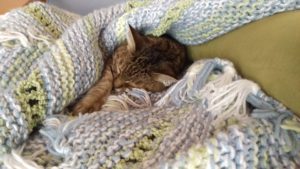 I truly believe that curing Parkinson’s disease is a multifold path. It takes hard work, it takes changing brain chemistry, it takes hacking into the brain and teaching it to do something new, and it takes faith.
I truly believe that curing Parkinson’s disease is a multifold path. It takes hard work, it takes changing brain chemistry, it takes hacking into the brain and teaching it to do something new, and it takes faith.
A little less than a year ago I happened upon the work of Janice Walton Hadlock, after she was discussed on Fred Phillip’s blog. Janice is a traditional Chinese medicine practitioner who was diagnosed with Parkinson’s disease and was able to cure herself. Janice put together a project to collect the stories of those who have been cured or are in remission from Parkinson’s, to find out what the people had in common about how they were able to be cured.
As she collected stories there was one common theme and that was a belief in God. However it wasn’t just a belief in God, as there were priests and nuns who were not cured of Parkinson’s but had true faith. There were two characterizes that defined the flavor of the connection to God needed to cure Parkinson’s. The first was that God had to be defined as loving, peaceful and benevolent. God had to be viewed as a protector and friend. And secondly, belief in God was not enough, praying to God wasn’t enough. People who cured themselves of Parkinson’s had daily dialog with their God. They talked to God and God talked back to them. They were in true communication with a God they respected and loved, who loved them back.
I remember coming to the final chapters of Janice’s book and feeling a little like Dorothy from the Wizard of Oz, when she finds out she has had the red ruby slippers and her way home the whole journey. I knew how to communicate with God (did it daily in my work) and I truly believed in God down to my very soul.
I have always had a deep spiritual connection with something greater than myself since I can first remember. For me it was not taught, I was not brought up with religion, it was just something I knew was true and there. I spent many years searching for my “true” religion, but finally reached the conclusion that my connection to my God was personal and that I didn’t need to be a certain religion to define it. By the way I’m pretty sure my God is the same as everyone else’s God, we just look in at God from different windows.
Over the years though I usually did not talk directly to God but instead talked mostly to my guides, which in the Judeo-Christian faiths would be called angels. I even went so far to spell God with a small g as I felt it was more respectful as God was not someone to be approached directly like a person.
After reading Janice’s work I started spelling God with a big G and decided that I could actually attempt to talk directly instead of always through my guides. God was big enough and full enough that I was not wasted God’s time on my petty human concerns. Although I admit I am still more comfortable talking to my guides.
In addition I started communicating multiple times a day with my guides instead of only when I needed help. It is actually great fun and my guides have a delightful sense of humor!
When I was looking for a building to put my business in I was drawing a picture of what it should look like. One thing I wanted was lots of light but my guides insisted that there be no windows on the whole right side of the building. When I finally found the building, you guessed it – no windows on the right side! But the building has wonderful light, something I couldn’t envision before seeing it given the whole side with no windows.
So why is communication with God so important in curing Parkinson’s?
Most people in Parkinson’s are stuck in a place of fear, Dr. Joaquin Farias calls it shock, and Janice Walton Hadlock calls it pause. We are neither in parasympathetic or sympathetic but instead in a state of near death freeze.
Belief in a power greater than yourself takes you out of fear and makes the world a place of trust and safety. If my life is in God’s hands I don’t have to be afraid. For me, my connection also opens me up to great joy and wonder. I am constantly in a sense of awe of what God has put in this world. There is no true loneliness when you are held in the love of a loving God. Dr. Laurie Mischley, who researches Parkinson’s disease, has found progression of the disease to be fastest in people who answer yes to the question, “are you lonely?”
At the same time, there is no easy path here. If I relied on blind faith alone, I would not get better. God still expects us to do the hard work. However I find there is more joy in the work when there is connection. God does not want us to be blind. Instead being aware opens up new paths to follow to healing and joy!
 So obviously if you have read anything I have written you know I am a woman of science. I firmly believe that God and science not only can both be embraced but in fact by embracing both the belief of both is strengthened.
So obviously if you have read anything I have written you know I am a woman of science. I firmly believe that God and science not only can both be embraced but in fact by embracing both the belief of both is strengthened.
There has actually been brain research done around what happens in the brain when we believe and communicate with God. How cool is that?
It has been found that, when you look at brain scans of someone communicating with God, the parts that light up are the parts of the brain related to inhibition and initiation of movement. These two functions we know are broken in people with Parkinson’s disease. Communicating with God stimulates the part of the brain where people with Parkinson’s have deficiencies! Wow!
It’s scarier for me sharing this part of my journey. This part is dear and close to my heart. But I truly believe that through my work with Dr. Joaquin Farias on rehabilitation, my daily supplements, and through God’s grace I will be able to cure this disease in myself. I also believe my work will eventually change into helping others with this disease as well as continuing my animal work. And when the time comes where the path to that opens up I will happily walk it. Life is a wonder and a joy!
 On my recent trip to Toronto, Dr. Joaquin Farias made a comment that we need to accept something before we can change it. This was very powerful to me.
On my recent trip to Toronto, Dr. Joaquin Farias made a comment that we need to accept something before we can change it. This was very powerful to me.
 I want to be like Martha. I can have Parkinson’s and still have a good life. I can accept that medication makes my life better, I can exercise like crazy, eat well, and take good care of myself. I will never give up on getting better but acceptance is key to me transforming this. You can’t change something if you don’t look it in the eye, if you are afraid of it or if you don’t accept it. I’m not totally there yet but I’m trying.
I want to be like Martha. I can have Parkinson’s and still have a good life. I can accept that medication makes my life better, I can exercise like crazy, eat well, and take good care of myself. I will never give up on getting better but acceptance is key to me transforming this. You can’t change something if you don’t look it in the eye, if you are afraid of it or if you don’t accept it. I’m not totally there yet but I’m trying.














